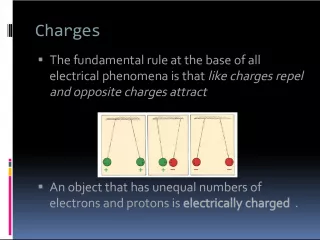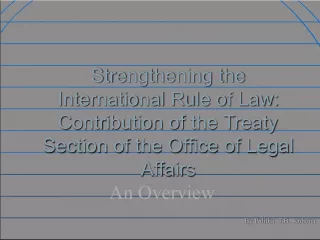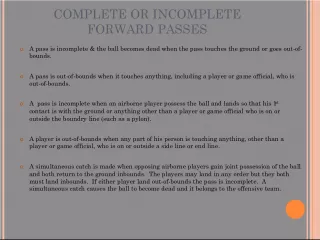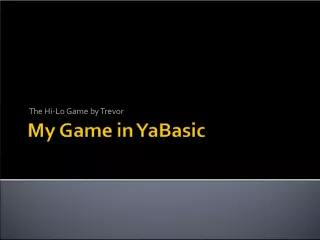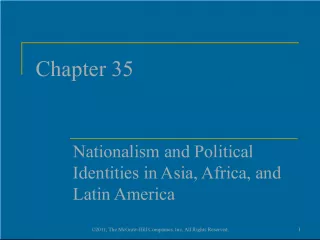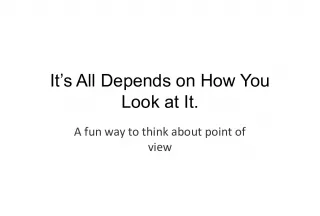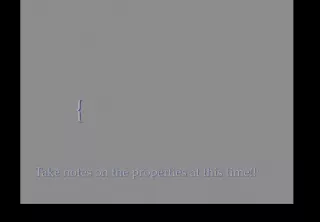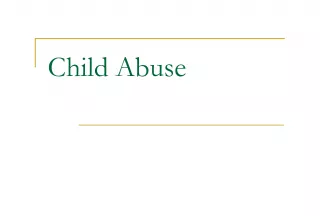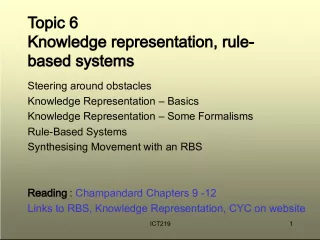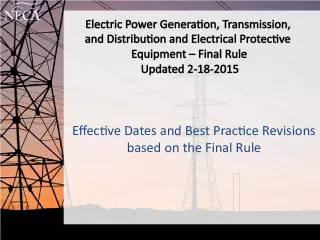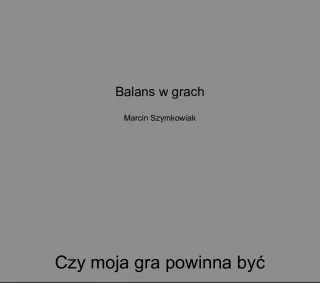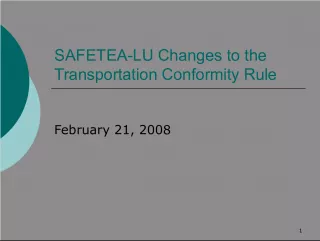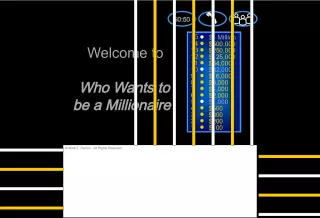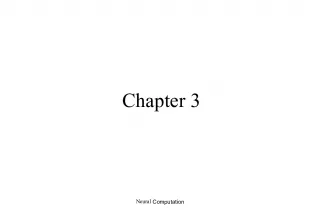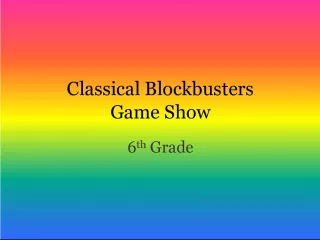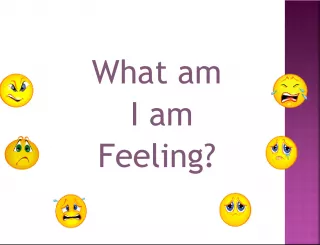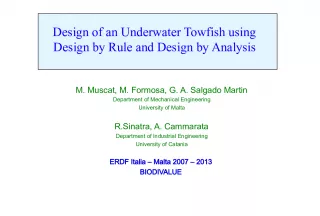The Passing Game Rule 7 - Definition of a Pass


A pass is throwing the ball and it remains a pass until caught or incomplete. Catching a pass means gaining possession inbounds, intercepting is catching the opponent's pass, and an airborne player must maintain possession when contacting the ground. The neutral zone may expand up to two yards on scrimmage downs.
- Uploaded on | 0 Views
-
 milalee
milalee
About The Passing Game Rule 7 - Definition of a Pass
PowerPoint presentation about 'The Passing Game Rule 7 - Definition of a Pass'. This presentation describes the topic on A pass is throwing the ball and it remains a pass until caught or incomplete. Catching a pass means gaining possession inbounds, intercepting is catching the opponent's pass, and an airborne player must maintain possession when contacting the ground. The neutral zone may expand up to two yards on scrimmage downs.. The key topics included in this slideshow are . Download this presentation absolutely free.
Presentation Transcript
1. THE PASSING GAME R ULE 7 DEFINITION: A pass is a deliberate act, a pass is the result of throwing the ball. The ball leaves the passers hand and travels in flight. Once the ball is thrown, its status remains a pass until it is caught or incomplete. 1) Catching a pass means gaining possession of the live ball in flight and first returning to the ground inbounds. 2) Catching the ball is always preceded by touching; if touching the ball causes the ball to become dead, securing possession of it is meaningless. 3) Intercepting a pass is catching an opponent’s pass. 4) An airborne player who obtains possession of the ball in the air must maintain possession when he contacts the ground. In other words, the ground can cause an incompletion. 5) On a simultaneous catch the offensive team retains possession. 6) On scrimmage downs, the neutral zone may be expanded following the snap up to two yards behind the defensive line of scrimmage to allow normal line play. THE NEUTRAL ZONE DOES NOT EXPAND INTO THE END ZONE.
2. FORWARD PASSES 7-5 A pass is forward if it is thrown with its initial direction toward the opponent’s end line. Once the passer starts his arm forward with possession of the ball, it is a forward pass, regardless of which direction the ball leaves his hand or where the ball lands. A pass is also forward if a defensive player contacts the passer or the ball after the passer has started his arm forward. If a player is attempting a forward pass and there is a question as to whether it is a forward pass or a fumble, it is to be ruled a forward pass. It makes no difference how a pass is thrown, it can be overhand, underhand, between his legs, with two hands. As long as the player start his arm forward and the ball leaves his hand it is a forward pass. Only one forward pass may be thrown during a scrimmage down. A forward pass (legal or illegal) is complete if it is caught by a player of either team and may be advanced. The pass is incomplete if it touches the ground, if it touches out of bounds or if a player possesses the ball while airborne and 1 st touches the ground out of bounds. A forward pass has crossed the neutral zone when the entire ball is beyond the neutral zone (where the pass is 1 st touched does not determine if the pass crosses the line). A forward pass may be batted in any direction by any player eligible to touch it. The runner becomes the passer when he throws (releases) a legal forward pass (he remains the passer until the pass ends or he moves to participate in the play). Roughing the passer carries a 15 yard penalty plus an automatic 1 st down. The yardage is added to the dead ball spot if the pass is completed and the run ends beyond the neutral zone and there is no change of team possession. The penalty is enforced from the previous spot in all other situations.
3. BACKWARD PASSES 7-4 A backward pass is one which does not meet the requirements of a forward pass. If the initial direction is not forward it is backward. Any player may throw a backward pass at any time. All players may touch and catch a backward pass. A grounded backward pass is a live ball. If the backward pass is caught or recovered inbounds by players of either team, the ball remains live and may be advanced. Except when the ball is handed directly to the quarterback, a snap is a backward pass. A player of the passing team may not bat a backward pass forward. An opponent of the passing team may bat a backward pass in flight in any direction. A grounded backward pass may not be batted by any player in any direction. If a fumble or backward pass is out-of-bounds behind a goal line, the ball belongs to the team defending that goal and the result is either a touchback or safety. A backward pass that goes out-of-bounds belongs to the passing team at the out-of-bounds spot.
4. LEGAL AND ILLEGAL FORWARD PASSES A legal forward pass may only be thrown by the team which put the ball in play from scrimmage. Only 1 legal forward pass may be thrown during the down. A forward pass is illegal if: It is thrown when the passer is beyond the neutral zone. It is thrown by either team after a change of team possession. It is the 2 nd forward pass by Team A during the down. The passer, to save yardage or time, intentionally grounds the ball, or throws the ball into an area where there is no eligible Team A receiver. The passer spikes the ball in order to stop the clock and (A) does not release the ball immediately after controlling a hand-to-hand snap, or (B) does so after a muffed snap has touched the ground. After an incomplete legal forward pass, the ball belongs to the passing team at the previous spot. After an incomplete illegal forward pass, the ball belongs to the passing team at the spot of the pass . The penalty for an illegal pass is 5 yards from the spot of the pass, plus loss of down . An illegal forward pass is a running play. The clock starts on the snap following an incomplete pass, except when an illegal pass is thrown to conserve time, then the clock starts on the ready.
5. MOMENTUM EXCEPTION The momentum rule applies when a defensive team player intercepts a forward pass or intercepts or recovers a backward pass inside his five yard line, and his momentum carries him into the end zone and the ball becomes dead there in his team’s possession. This is not a safety. The defensive team is awarded a new series at the spot of the catch or recovery if the ball is declared dead in the end zone in his team’s possession without it having returned to the field of play.
6. ELIGIBILITY Eligibility rules only apply to legal forward passes All Team B players are eligible Any Team A player is eligible if he wears a number other than 50-79 and is either on the end of his line or legally in the backfield at the snap. A total of six players per snap. A player is eligible by both number and position. Other Team A players are ineligible if, at the snap, they are neither on-the-line nor in the backfield (except for a player in position to hand-to-hand snap from between the snappers legs (Quarterback). Any Team A player that was eligible at the snap remains eligible the entire down. If a Team A player voluntarily goes out-of-bounds, he does not lose his eligibility, but he commits illegal participation if he returns inbounds. If he is blocked out-of-bounds by an opponent he must return inbounds immediately to avoid the foul. If a Team A player voluntarily goes out-of-bounds and returns it is a foul for illegal participation, the penalty is 15 yards enforced under the all-but-one principle. If a Team B player touches the pass anywhere, all Team A players become eligible.
7. INELIGIBILES DOWNFIELD The key to ineligible receiver downfield is not where the ineligible is when the forward pass is thrown, it is where has he been at any time between the snap and the pass. During a down in which a legal forward pass crosses the neutral zone, ineligible players may not advance beyond the neutral zone until the pass is thrown. This does not apply to players who contact an opponent and maintain contact within the expanded neutral zone. The penalty for an ineligible player downfield is 5 yards from the previous spot (loose ball play). If the ineligible has advanced beyond the expanded neutral zone and returns behind the neutral zone before the pass is thrown, it is still a foul. If an ineligible player catches, bats or muffs a pass before it touches an opponent, it is illegal touching. The penalty is 5 yards plus loss of down, enforced under the all-but-one. There is no foul for an ineligible downfield if the forward pass does not cross the neutral zone. On a screen pass completed behind the line, it is legal for ineligible receivers to go downfield anytime after the snap and block. If a pass is deflected by any Team B player in or behind the neutral zone and it goes beyond the neutral zone, there is no foul for being illegally downfield. Eligibility rules only apply to legal forward passes. There is no foul for ineligibles downfield if the pass is illegal. REMEMBER: The penalty for ineligible receiver downfield and illegal touching by an ineligible are different. Illegal touching carries a loss of down provision and the ineligible receiver downfield does not.
8. ELIGIBILITY: IF THE PASS IS: Eligible A Eligible A Eligible A Ineligible A ___ Eligible A Team B Ineligible A Eligible A Ineligible A Ineligible A Ineligible A Team B Team B Eligible A Team B Ineligible A Team B Team B Legal Catch Illegal Touching Interception Illegal Touching Illegal Touching Illegal Touching, Interception Legal Catch Legal Catch Interception INITIALLY TOUCHED BY CAUGHT BY RESULT
9. PASS INTERFERENCE Definition: Pass interference is interfering with an eligible opponent’s opportunity to move toward, catch or bat the ball. Pass interference rules only apply beyond the neutral zone when a legal forward pass crosses the neutral zone. In most cases pass interference involves contact between opponents although contact is not required. Face Guarding does not involve contact but it is also interference. The act is an intentional waving of the hands in an attempt to block the vision of an eligible receiver. Face Guarding can only occur inbounds beyond the neutral zone. Remember an attempt by a defender to put his hands between the hands of the receiver to knock the ball away is not face guarding. It is not pass interference if unavoidable contact results from a simultaneous and bona fide attempt by both players to reach, catch or bat the pass, they both have equal rights to the ball. It is not pass interference if contact by Team B occurs away from the direction of the pass (holding, illegal use of the hands, personal foul) may be called. The direction of the pass requirements do not affect offensive pass interference calls. “Catchability” of a pass is not a factor for pass interference. There cannot be pass interference behind the neutral zone.
10. OFFENSIVE INTERFERENCE Offense players are restricted from the time the ball is snapped 7-5-8. Offensive players are allowed to immediately contact an opponent as long as the contact does not continue beyond the expanded neutral zone (2 yards deep into the defensive zone). This contact is not pass interference. Restrictions end for all Team B players when any player touches the pass 7-6-9. Restrictions end for all eligible Team A players when any player touches the pass 7-6-9. Restrictions end for all ineligible players when a Team B player touches the pass 7-6-9. The penalty for offensive pass interference is 15 yards from the previous spot and loss of down.
11. DEFENSIVE INTERFERENCE The restriction for defensive players begin when the ball leaves the passers’ hand 7-5-8. The defense may treat the receiver as a potential blocker and use unlocked arms to ward him off before a pass is thrown. If the receiver is not attempting to block, and is going past or moving away from the defender, the defense may not make contact. A good rule of thumb, allow contact by the defense until the receiver occupies the same yard line as the defender or until the opponent cannot possibly block him. Continuous contact by the defender on a potential receiver is illegal. Restrictions end for defensive players when the pass is touched by any player. Pass interference can only occur beyond the neutral zone. The penalty for defensive pass interference is 15 yards from the previous spot and an automatic 1 st down.
12. PASS INTERFERENCE REVIEW Keys for pass interfererence: 1) all eligible receivers on both teams have equal rights to the ball. 2) There is interference only if the action involves contact that interferes with an opponent’s opportunity to move toward, catch or bat the pass. Contact by a defender obviously away from the direction of the pass is not pass interference. It is possible for another foul (holding, illegal use of the hands etc.) to be called. It is important to understand that the receiver and defender have a right to the ball and incidental contact (no foul), may be the proper call if both players are making a simultaneous and actual attempt to reach the ball. Pass interference fouls only apply under the following conditions: 1) The pass is a legal forward pass that crosses the neutral zone and is untouched by Team B in or behind the neutral zone. 2) The interference occurs beyond the neutral zone. 3) The interference is with an eligible opponent. 4) The interference occurs before restrictions have ended. 5) Face guarding is the only non-contact act which can be judged to be interference. 6) “Catchability” of a pass is not a factor for pass interference. 7) If pass interference by either team is intentional, an additional 15 yards are added to the original 15-yard penalty.
13. THE PASSING GAME R ULE 7 This power point is a review to help officials to better understand the passing game. Please review the next power point that covers complete or incomplete forward passes. If you have any questions in regards to the passing game please contact your chapter interpreter.
